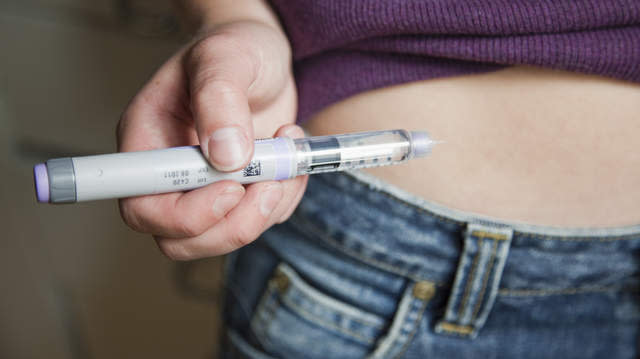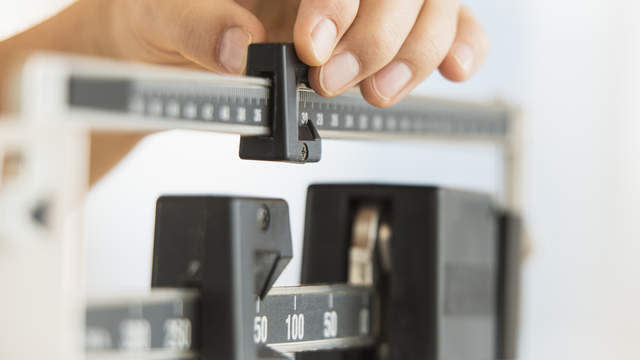What Is Type 2 Diabetes?

Jump to: Causes | Symptoms | Diagnosis | Treatment | Is type 2 diabetes curable? | Diet | Prevention | Celebrities with type 2 diabetes
What is type 2 diabetes
Type 2 diabetes is a chronic condition that affects your body’s use of glucose (a type of sugar you make from the carbohydrates you eat). Glucose is the fuel your cells need to do their work. You need glucose for energy. You also need insulin, a hormone produced by the pancreas that helps glucose enter your cells so that it can be converted to energy.
Here’s the problem: People with type 2 diabetes (also known as diabetes mellitus) can’t properly use or store glucose, either because their cells resist it or, in some cases, they don’t make enough. Over time, glucose builds up in the bloodstream, which can lead to serious health complications unless people take steps to manage their blood sugar.
Type 2 diabetes affects more than 29 million Americans, including nearly eight million who don’t even know they have it. You may be at greater risk of developing type 2 diabetes if it runs in your family, if you are of a certain age or ethnicity, or if you are inactive or overweight.
Type 2 diabetes vs. type 1 diabetes
What’s the difference between type 1 and type 2 diabetes?
Type 1 diabetes is an autoimmune disease in which the body does not produce insulin. The immune system destroys insulin-producing cells in the pancreas. Type 1 diabetes is usually diagnosed in children, teens, and young adults. People with type 1 diabetes need life-long insulin therapy.
Type 2 diabetes is much more common. In type 2 diabetes, the body doesn’t use insulin properly or, in some cases, doesn’t make enough. It’s usually diagnosed in middle-aged or older adults, but anyone can develop type 2 diabetes. It can be managed through diet, exercise, and medication.
RELATED: The Best and Worst Foods for People With Diabetes

What causes type 2 diabetes?
Type 2 diabetes occurs when the body doesn’t use insulin as it should or when the pancreas doesn’t make enough insulin to ferry glucose out of the bloodstream and into the cells. Instead, the glucose builds up in the blood, resulting in high blood sugar.
When your body can’t use insulin properly, it’s called insulin resistance. Insulin resistance is responsible for most cases of type 2 diabetes. Scientists don’t know why cells in the body become resistant to insulin, but it’s clear that certain genetic and lifestyle factors play a role. Here are the most common:
Your genes. Type 2 diabetes tends to run in families. Scientists haven’t pinpointed the gene or genes responsible for insulin resistance. But even if you inherit certain genes that amp up your risk, it doesn’t mean you will go on to develop type 2 diabetes. How you live your life also affects your risk.
Your race. Certain racial groups, especially African Americans, Latinos, Native Americans, and Asian Americans/Pacific Islanders have a higher risk of developing type 2 diabetes than white people.
Your lifestyle. There’s nothing you can do about the genes you inherit. But you can control how you live. Being overweight is the main risk factor for developing insulin resistance, especially if you carry that extra weight around your waist. Being sedentary, smoking, drinking too much alcohol, and consuming a high-fat, low-fiber, sugar-laden diet can all increase your type 2 diabetes risk. You can reduce your risk by adopting healthier habits.
Your existing health concerns. Other medical issues that can increase your risk of developing type 2 diabetes include:
Having prediabetes. Prediabetes means having higher-than-normal blood glucose levels but not high enough to be diagnosed with type 2 diabetes. People with prediabetes who don’t control their blood sugar can go on to develop type 2 diabetes.
Having gestational diabetes. Women who have gestational diabetes have elevated blood sugar levels during pregnancy and are at higher risk of developing type 2 diabetes later on. Moms should be tested six to 12 weeks after giving birth to screen for the condition.
Having another condition linked to type 2 diabetes. Polycystic ovary syndrome, for example, affects women’s sex hormones and is associated with an elevated diabetes risk, as is a history of heart disease or stroke.

Type 2 diabetes symptoms
Type 2 diabetes can sneak up on you. Many people don’t know they have it because symptoms usually develop slowly over time. But there are several signs of type 2 diabetes to watch for. Early indicators include increased urination, thirst, and hunger. Over time, excess sugar in the bloodstream can lead to other symptoms, including slow-to-heal wounds and frequent infections. If you develop any of these symptoms of type 2 diabetes, talk to your doctor.
Excessive urination. Running to the bathroom more often than usual or producing more urine than normal (including at night) can be one of the first signs of type 2 diabetes. Excessive urination, also called polyuria, occurs when blood sugar levels are too high. The kidneys have to work overtime to filter the excess sugar out of your blood, and some of it gets flushed out of the body in your urine.
Increased thirst. Excessive thirst, also called polydipsia, is another classic sign of type 2 diabetes. When your blood glucose is higher than normal, excess sugar spills into your urine, pulling water with it, and you have to urinate more frequently. You can become dehydrated from all that extra urination, so you then become thirsty, leading you to drink even more–and urinate more.
Increased hunger. When you are insulin resistant or don’t make enough insulin, glucose can’t enter your cells. Starved for energy, you get hungrier than usual. Excessive hunger or increased appetite is also known as polyphagia.
Blurred vision. High blood sugar can cause the lens of the eye to swell, causing blurry vision. If your blood sugar levels fluctuate, you may notice at least a temporary improvement when sugar levels are closer to normal.
Unexplained weight loss. Sudden or unplanned weight loss can be a sign that your cells aren’t getting glucose for energy. Without that sugar for fuel, your body begins burning fat and muscle instead, leading to weight loss.
Fatigue. When blood sugar is elevated, that fuel can’t get to its destination. As a result, your energy lags, and you feel depleted. You may not be sleeping well, either, if you make frequent nighttime trips to the bathroom to empty your bladder.
Frequent infections. Yeast and bacteria thrive on sugar, so when blood glucose levels are abnormally high, there’s a greater risk for frequent or more severe yeast or urinary tract infections.
Slow-healing wounds. People with type 2 diabetes may find that it takes a long time for skin injuries to heal. That’s because sugary blood is thicker and moves more slowly, especially through narrow blood vessels, meaning healing blood and oxygen takes longer to reach damaged tissue. Having open sores and wounds also boosts the risk for infections.
Dry, itchy skin. Everyone gets dry skin, but itchy feet, ankles, or legs could be signs of type 2 diabetes if you have other symptoms too. Fluid loss due to frequent urination plus poor circulation and nerve damage due to thick, sugary blood can dry out your skin, especially on your lower extremities.
RELATED: Have Diabetes? 7 Tips for a Healthy Pregnancy

How is diabetes diagnosed?
Several tests may be used for diagnosing diabetes. A simple blood test known as a hemoglobin A1C (or glycated hemoglobin test) measures average blood glucose levels over the past three months. (Why three months? Because glucose attaches to a protein called hemoglobin in red blood cells, and those cells get recycled and replenished about every three months.)
A normal A1C is below 5.7%. A higher percentage reflects higher blood glucose levels. Prediabetes is defined as a reading of 5.7 to 6.4, while diabetes is diagnosed when glucose levels reach 6.5% or higher.
A fasting plasma glucose test measures blood glucose at a single point in time. Generally, this test is performed first thing in the morning before breakfast, after at least eight hours of fasting. A normal reading is less than 100 milligrams per deciliter (mg/dl). A reading of 100 to 125 mg/dl signals prediabetes, and a reading of 126 mg/dl or higher indicates diabetes.
An oral glucose tolerance test measures your body’s ability to handle glucose. It is mostly used to diagnose gestational diabetes. First, blood is drawn after an overnight fast. Then you drink a special glucose solution, and your blood is drawn again two hours later. A normal reading at that time is 139 mg/dl or below. A reading of 140 to 199 mg/dl indicates prediabetes, while diabetes is diagnosed at 200 mg/dl or above.
A random or casual plasma glucose test may be performed any time you have diabetes symptoms. It doesn’t require fasting. A reading of 200 mg/dl or above suggests diabetes.
These tests cannot distinguish between type 1 and type 2 diabetes. Generally, people with type 1 diabetes are diagnosed as children, teens, or young adults, while type 2 diabetes usually occurs in adults 45 and older. Type 1 diabetes is an autoimmune disease, so an autoantibody test may be done to help a doctor determine if you have type 1 or type 2 diabetes.
Type 2 diabetes treatment
Type 2 diabetes is treated through diet, exercise, and medication. The goal of treatment is to keep blood sugar under control and stave off diabetes complications.
Some people manage through diet and exercise alone. Others need oral medicines, insulin, other injectable medications, or some combination of type 2 diabetes med–along with healthy food and fitness–to keep blood sugar in check.
There are lots of treatment options. What your doctor prescribes may depend on what other health conditions you have and how well certain medications work for you.
RELATED: 12 Myths About Insulin and Type 2 Diabetes
Diabetes treatment includes:
Metformin. This oral medication comes as a pill or liquid. It’s often the first medicine that people with type 2 diabetes take. Metformin improves your body’s use of insulin and reduces the amount of glucose your liver makes.
Sulfonylureas. These pills stimulate the release of insulin by the pancreas and help the body use insulin better. Popular sulfonylureas include glimepiride (Amaryl), glipizide (Glucotrol), and glyburide (DiaBeta, Micronase, and Glynase).
Meglitinides. Much like sulfonylureas, this class of medicines boosts insulin production in the body. These oral meds, including repaglinide (Prandin) and nateglinide (Starlix), are fast acting and don’t stay in the body for long, so they must be taken just before meals.
Thiazolidinediones. Also known as TZDs or glitazones, these oral medications work by lowering insulin resistance. This class includes pioglitazone (Actos) and rosiglitazone (Avandia).
Gliptins or DPP-4 inhibitors. This class of drugs improves the release of insulin in the body. One example is sitagliptin (Januvia).
SGLT2 inhibitors. These oral medicines help your kidneys remove sugar from the body through urine. The class includes canagliflozin (Invokana), dapagliflozin (Farxiga), and empagliflozin (Jardiance).
GLP-1 receptor agonists. Injectable drugs like exenatide (Byetta), liraglutide (Victoza), and dulaglutide (Trulicity) control blood sugar by slowing digestion, improving how insulin works in the body, and preventing the liver from releasing too much sugar into the bloodstream.
Insulin therapy. There are many different types of insulin. They vary by how soon they start to work, when they peak, and how long they last. Insulin comes in different strengths and has multiple delivery methods–needle, pen, pump, port, jet injector, and inhaler.
Bariatric surgery. Research suggests that weight-loss surgery can improve blood sugar control in some obese people with type 2 diabetes. Some people may no longer need diabetes medication after bariatric surgery, but these results tend to vary patient to patient.
Can type 2 diabetes be cured or reversed?
No treatments can cure diabetes. But this chronic condition can be controlled, and sometimes symptoms even disappear for periods of time.
Remember, type 2 diabetes develops gradually as the cells in the body resist insulin or the pancreas fails to make enough of it. For a while, there’s enough insulin to get by. But, in time, the body can no longer convert glucose into energy, causing blood sugar levels to spike.
Type 2 diabetes treatments don’t fix this problem. There’s no type 2 diabetes cure. But medications can help people normalize their blood sugar, and gaining control over your blood sugar is crucial for preventing or reducing complications.
Left untreated, type 2 diabetes can wreak havoc, damaging the heart, blood vessels, nerves, kidneys, brain, eyes, feet, and skin. It increases the risk for heart attack and stroke. It can lead to kidney failure. People with type 2 diabetes can lose their vision. In some severe cases, people with type 2 diabetes need a foot or a leg amputated. The risk of these and other complications is why it is so important to keep your blood sugar under control.
Type 2 diabetes diet
A healthy diet can help people with type 2 diabetes shed excess weight and manage blood sugar. While there’s no one-size-fits-all meal plan for controlling type 2 diabetes, watching what and how much you eat can go a long way.
One option for your type 2 diabetes diet is to adopt a plant-based Mediterranean-style of eating, incorporating healthy oils, fish, fruits, vegetables, nuts, and beans.
Or “Create Your Plate” with the help of an online tool by the American Diabetes Association. Fill half of your plate with non-starchy vegetables, one quarter with protein and one quarter with grains or other starchy foods. Add a serving of fruit, dairy, or both, and use healthy fats in small amounts. Round out your meal with water or a low-calorie drink like unsweetened coffee or tea.
Some people learn to count carbohydrates, since carbs affect blood sugar more than protein and fat. Keeping track of daily carb consumption can help keep blood sugar levels within a normal range. A dietitian or diabetes counselor can help you learn to track grams of carbohydrate in the foods you eat.
RELATED: 20 Tasty Diabetes-Friendly Recipes

Type 2 diabetes prevention
To prevent type 2 diabetes, take a close look at your health habits. There’s a lot you can do to lower your risk, and even modest changes can help.
Eat healthy. To prevent weight gain–a major risk factor for type 2 diabetes–eat more fruits and vegetables, cut back on sugary drinks and desserts, and watch your portion sizes.
Lose weight. If you’re overweight, dropping just 5% to 7% of your weight (that’s 10 to 14 pounds for a 200-pound person), and keeping that weight off, can prevent or delay type 2 diabetes.
RELATED: 10 Diet and Exercise Tricks to Control Diabetes
Get physical. The American Diabetes Association recommends a combination of aerobic exercise and strength training. Aim for 30 minutes of moderate to vigorous exercise, like brisk walking, swimming, cycling, or tennis, at least five days a week. Strength-training exercises build muscle mass, which helps you burn more calories, even when you’re at rest, so you can keep those pounds off.
Celebrities with type 2 diabetes
Actors, athletes, and musicians aren’t immune to type 2 diabetes. While some famous folks with diabetes say the diagnosis came as a surprise, others were aware of risk factors they faced, like a family history of the disease. After making healthy changes, many chose to speak out about the dangers of type 2.
Actor Tom Hanks announced his type 2 diabetes diagnosis in 2013, revealing that his blood sugar levels had been high for years before he was diagnosed. It’s possible that his yo-yo dieting for roles–he gained 30 pounds to play Jimmy Dugan in A League of Their Own and later shed 50 to play Chuck Noland in Cast Away–could have increased his risk of blood sugar problems.
Celebrity chef Paula Deen, famous for dishes loaded with fat and calories, confirmed she had type 2 diabetes in 2012. A buttery diet alone will not necessarily cause diabetes, however; Deen spoke out about other risk factors that can play a role in the disease, like age, genes, and stress.
Tennis legend Billie Jean King was diagnosed with type 2 diabetes in 2007. After years of battling with her weight, she used the diagnosis as motivation to lose 35 pounds. Music producer Randy Jackson also lost weight after a type 2 diabetes diagnosis. With gastric bypass surgery, he shed almost 100 pounds and got his blood sugar under control.
Other notable stars with type 2 diabetes include self-proclaimed “divabetic” Patti Labelle, who was diagnosed after passing out on stage in 1994; actor Paul Sorvino, who experienced fatigue and increased thirst for months before he was diagnosed; and Dick Clark, who became a spokesperson for the American Association of Diabetes Educators 10 years after he himself was diagnosed.
